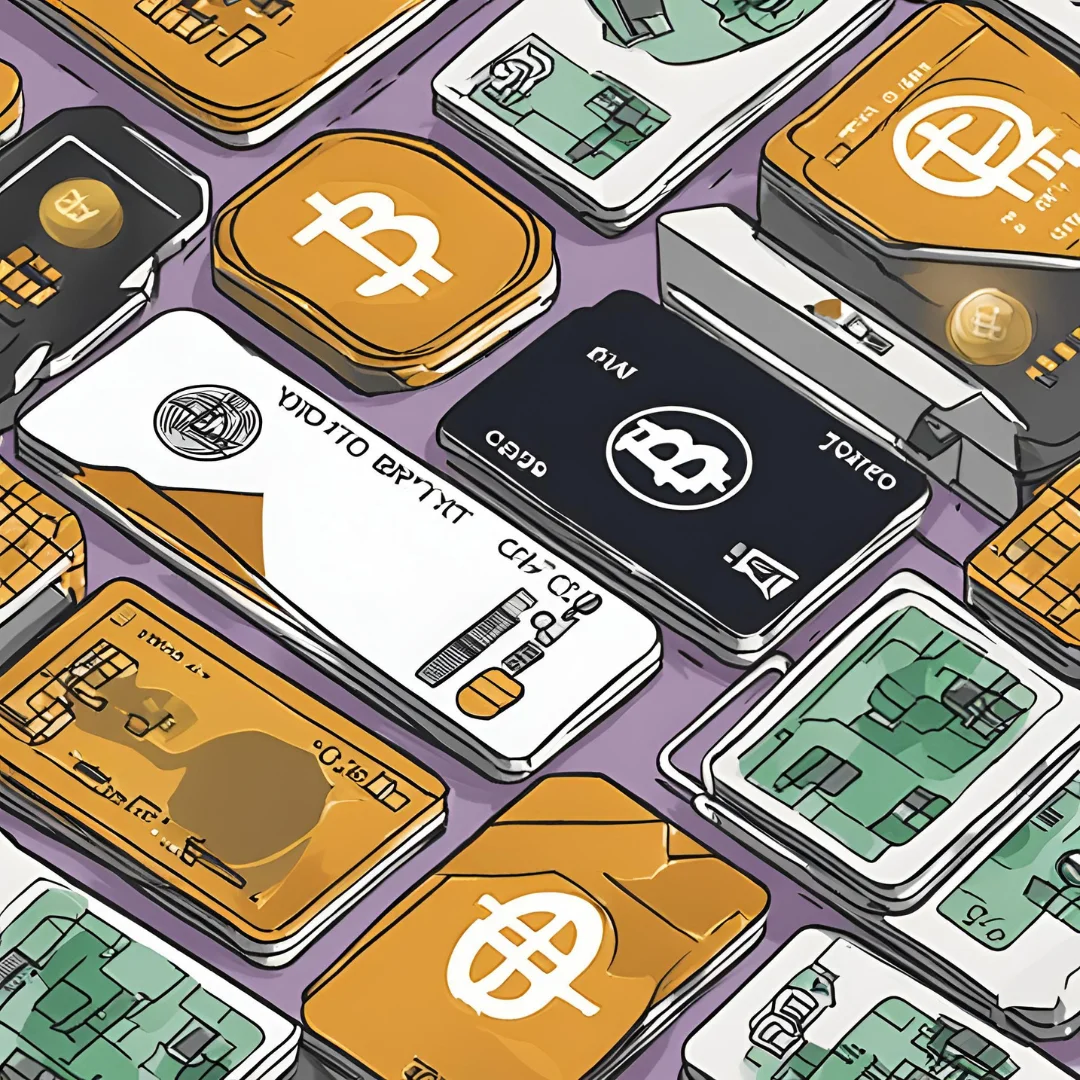From being a speculative asset, cryptocurrency has developed into a useful financial instrument that enables users to spend digital assets in actual transactions. Crypto debit cards are among the most practical ways to use cryptocurrency for regular purchases. By allowing users to spend Bitcoin, Ethereum, and other cryptocurrencies like cash, these cards close the gap between traditional finance and digital currencies.
However, what are the benefits, drawbacks, and security threats of cryptocurrency debit cards? We'll go over how to use crypto debit cards, their underlying technology, and the top choices on the market right now in this comprehensive guide.
1. What is a Crypto Debit Card?
Although it is connected to a cryptocurrency wallet rather than a bank account, a crypto debit card works similarly to a regular debit card. By instantaneously converting cryptocurrency into fiat money (USD, EUR, etc.) at the time of purchase, it enables users to spend cryptocurrency at businesses that take Visa or Mastercard.
Key Features of Crypto Debit Cards:
✔ Instant Crypto-to-Fiat Conversion – Before spending, there's no need to manually convert cryptocurrency to cash.
✔ Widely Accepted – Usable at millions of retailers across the globe.
✔ Cash Withdrawals – Certain cards enable fiat currency withdrawals from ATMs.
✔ Rewards & Cashback – Many provide loyalty benefits and cashback based on cryptocurrency.
✔ Multiple Cryptocurrencies Supported – Spend Ethereum (ETH), Bitcoin (BTC), and stablecoins such as USDT.
Crypto debit cards only let you spend the money in your cryptocurrency wallet, as opposed to credit cards, which let you borrow money.
2. How Do Crypto Debit Cards Work?
Every time a transaction takes place, a crypto debit card's primary purpose is to instantly convert cryptocurrency into fiat. This is the step-by-step process:
Step 1: Load Crypto Onto Your Card
-
Users fund their card-linked wallet with Bitcoin, Ethereum, or other compatible cryptocurrencies.
-
Automatic top-ups with a linked exchange account are permitted by certain carriers.
Step 2: Make a Purchase
-
At a point-of-sale terminal, the user touches or swipes their crypto debit card, or they input their card information online.
-
Instead of cryptocurrency, the merchant is paid in local fiat money (USD, EUR, etc.).
Step 3: Crypto-to-Fiat Conversion Happens Instantly
-
The required quantity of bitcoin is instantaneously converted into fiat at the current exchange rate by the crypto debit card supplier.
-
This guarantees seamless transactions without requiring merchants to directly accept cryptocurrency.
Step 4: Transaction Confirmation
-
The transaction is handled similarly to how a typical debit card payment is handled.
-
A payment confirmation is sent to the user via email or the crypto card's mobile app.
While some crypto cards convert cryptocurrency into fiat instantly at the time of purchase, others let customers do it manually before spending.
3. Types of Crypto Debit Cards
Various forms are available for cryptocurrency debit cards based on how they handle transactions and money.
A. Prepaid Crypto Debit Cards
✅ Users load crypto onto the card and convert it to fiat before making purchases.
✅ Works like a prepaid gift card—spend only what’s loaded.
✅ Reduces exchange rate risks.
Example: BitPay Card (Supports BTC, ETH, USDT, and other cryptos).
B. Auto-Conversion Crypto Debit Cards
✅ Converts crypto to fiat automatically at the point of sale.
✅ No need for manual conversions—just swipe and spend.
✅ Subject to real-time exchange rates.
Example: Crypto.com Visa Card (Offers cashback rewards in CRO tokens).
C. Stablecoin-Based Crypto Debit Cards
✅ Works best with stablecoins like USDT, USDC, and BUSD.
✅ Eliminates volatility risks associated with Bitcoin or Ethereum.
✅ Often offers lower transaction fees.
Example: Binance Card (Supports stablecoins for seamless transactions).
Depending on your preference for stablecoin stability, prepayment control, or real-time conversion, each option offers unique benefits.
4. Benefits of Using Crypto Debit Cards
For consumers wishing to include digital assets into their regular spending, cryptocurrency debit cards provide a number of benefits.
A. Spend Crypto Anywhere
✔ accepted by Visa or Mastercard at millions of retailers globally.
✔ No need to convert crypto to fiat manually before making purchases.
B. Crypto Cashback & Rewards
✔ Numerous cryptocurrency debit cards, such as the Crypto.com Visa Card's CRO cashback, provide up to 8% cryptocurrency cashback.
✔ Users can receive incentives in local exchange tokens, Ethereum, or Bitcoin.
C. ATM Withdrawals in Fiat
✔ Use your cryptocurrency balance to make local currency withdrawals from ATMs.
✔ Free ATM withdrawals are available with some cards up to a monthly cap.
D. No Need for a Traditional Bank Account
✔ Crypto debit cards are helpful for people without bank accounts because they circumvent the conventional banking system.
✔ For frequent travelers, the quick and borderless transactions are perfect.
5. Challenges & Risks of Crypto Debit Cards
While crypto debit cards are convenient, they also come with potential risks and limitations.
A. Volatility Risk
❌ Because cryptocurrency prices change so quickly, the amount of money deposited onto the card could lose value.
✔ Solution: To prevent volatility, use stablecoins (USDT, USDC).
B. High Conversion Fees
❌ When converting cryptocurrency to money, certain cryptocurrency debit cards impose exorbitant conversion costs (2%–3%).
✔ Solution: Select cards (like the Binance Card) that have minimal or no conversion costs.
C. Limited Merchant Acceptance for Direct Crypto Payments
❌ Merchants only get fiat, not cryptocurrency.
✔ Solution: Use wallets supported by the Lightning Network if you want retailers to take cryptocurrency directly.
D. Regulatory Uncertainty
❌ Because of regulatory concerns, the use of cryptocurrency cards is restricted in many countries.
✔ Solution: Before applying, find out if purchases using cryptocurrency cards are permitted in your area.
6. Best Crypto Debit Cards in 2025
If you’re considering getting a crypto debit card, here are some of the top options available:
| Crypto Debit Card | Supported Cryptos | Cashback | ATM Withdrawals | Card Network |
|---|---|---|---|---|
| Crypto.com Visa | BTC, ETH, USDT, CRO | Up to 8% | Free (limits apply) | Visa |
| Binance Card | BTC, BNB, BUSD, USDT | Up to 2% | Free (limits apply) | Visa |
| Coinbase Card | BTC, ETH, LTC, USDC | Up to 4% | Standard fees | Visa |
| BitPay Card | BTC, ETH, USDT | No cashback | Standard fees | Mastercard |
| Wirex Card | BTC, LTC, XRP, DAI | Up to 2% | Free (limits apply) | Visa |
7. Future of Crypto Debit Cards
As usage increases, cryptocurrency debit cards are probably going to become even more common. What to anticipate in the future is as follows:
🔹 Increased Merchant Acceptance – Instead than only accepting fiat conversions, more merchants will take straight cryptocurrency payments.
🔹 Lower Fees & Better Rewards – Higher cashback incentives and reduced conversion fees will result from competition.
🔹 Integration with DeFi & NFTs – Users may be able to purchase using NFTs or spend straight from DeFi wallets using cards.
🔹 Regulatory Clarity – Clearer regulations could be introduced by governments, increasing the accessibility of cryptocurrency cards.
Crypto debit cards will be essential to the mainstreaming of digital payments as the use of cryptocurrencies grows.
Final Thoughts
An inventive way to spend Bitcoin, Ethereum, and other cryptocurrencies like cash is with crypto debit cards. These cards make spending cryptocurrency easier than ever before with cashback benefits, real-time crypto-to-fiat conversion, and ATM withdrawals.
A crypto debit card can be an effective financial instrument if you want to include cryptocurrency into your daily life; just make sure to pick one that works for you. 🚀




